Fingal Innovative Projects will mark the Final Chapter of the Decade of Centenaries
Fingal County Council is pleased to announce a series of projects which will mark the final chapter in the Decade of Centenaries and will be launched on Wednesday November 8th in County Hall Swords
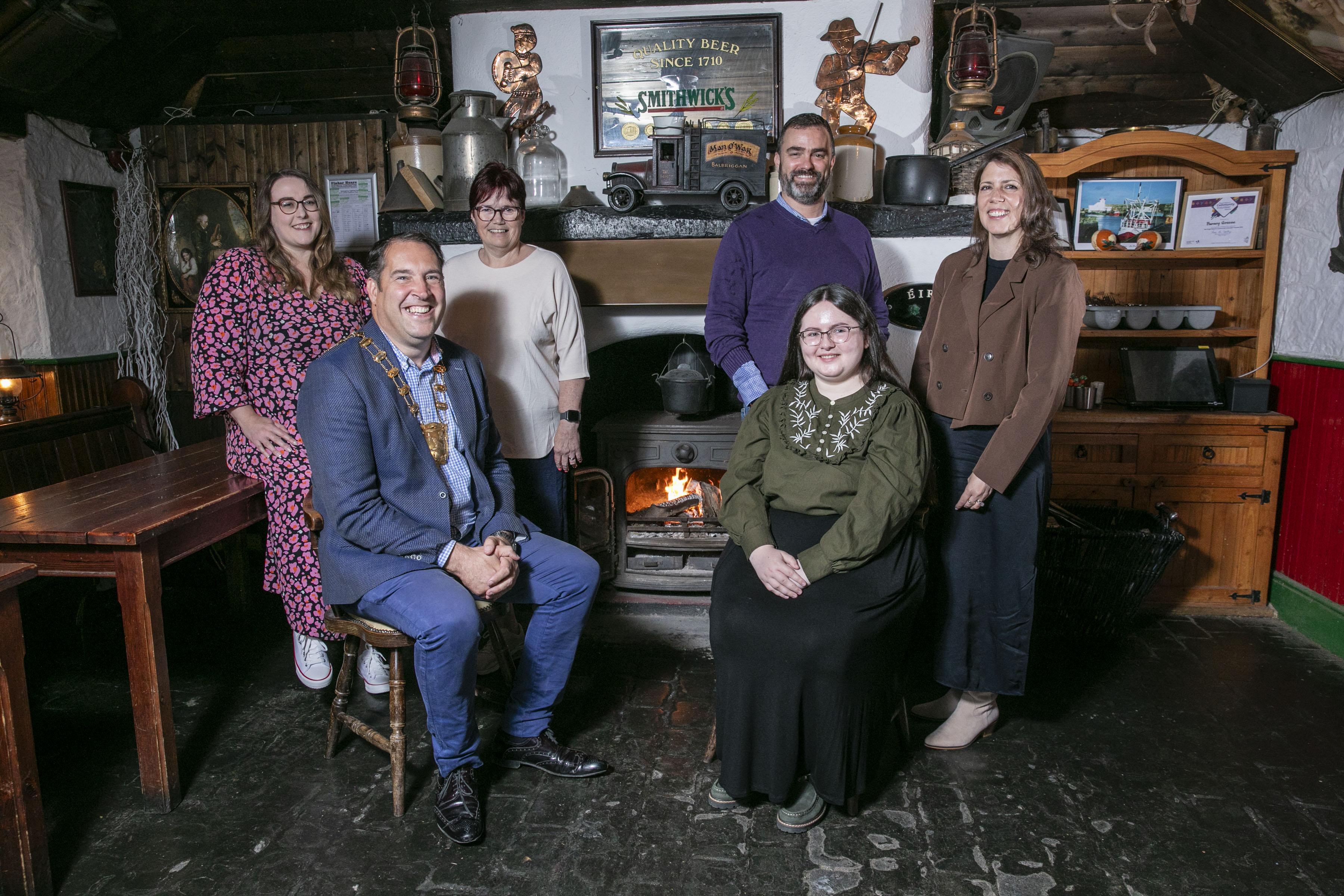
Fingal County Council is pleased to announce a series of projects which will mark the final chapter in the Decade of Centenaries. Fingal Local Studies and Archive team and Arts Office will present an exhibition and artwork featuring Fingal’s legacy in this significant period in Irish History. The exhibition will also mark the publication of ‘Politics, War and Revolution: A Timeline of Fingal History 1912-1923’ which is a culmination of research carried out by Fingal Libraries to mark the end of this decade. The Commemorations team came together with Mayor of Fingal Cllr Adrian Henchy to launch the projects in the beautiful setting of the Man O War Inn.
The ‘Politics, War and Revolution: A Timeline of Fingal History 1912-1923’ publication, along with its accompanying exhibition, combines both chronology and theme in an attempt to show what life in Fingal was like at that time. The Timeline is not a complete history of the revolutionary years in Fingal, but this approach allows us to see the impact of high-level national events playing out at ground level.
This commemoration also includes a new Art Commission "Turning of the Tithe" by local artist Sophie Daly. Working closely with the research gathered from Fingal’s commemorative timeline Sophie was interested in the somewhat muted records of women during this period, especially those of mothers who had lost sons either directly or indirectly as part of this conflict. Sophie weaves a narrative between the mothers and their soldier sons during this period of unrest where she compares this to the myth of Mechi a mostly forgotten tale in Irish Mythology. The work takes the form of a three-channel animation and will be screened as part of Fingal’s commemorative exhibition which will take place in county hall in Swords on November 8th.
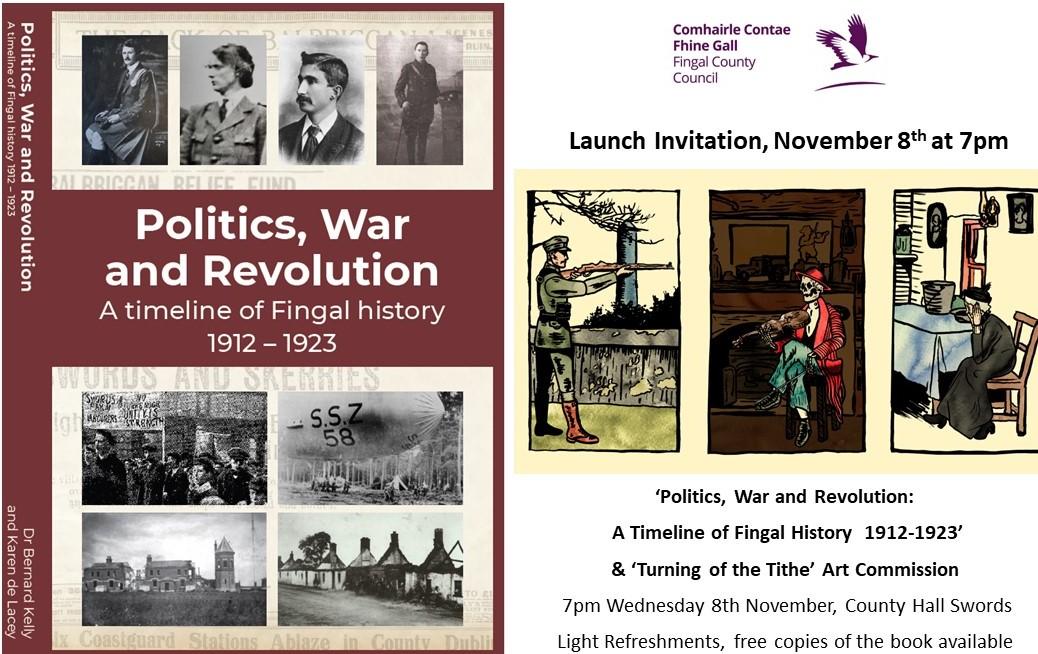
For the Fingal County Council’s Arts Office, the work marks the end of the Decade of Centenaries where several Public Art commissions presented new ways to connect with key moments in Fingal’s history. These included Mobile Monuments a work which considered Fingal’s part in the 1916 rising; a new work to mark the Sack of Balbriggan 1920; A Burning Tide in 1921 and a film and music commission titled Peace to the Ashes in 1922.
Over the decade Fingal Local Studies and Archives has commemorated World War One, especially through the poignant letters from the trenches written by Richard “Dick” Hely Hutchinson (2014), the Rising in Fingal (2016), the First Dáil (2019), the Sack of Balbriggan (2020), the Burning of the Coastguard Stations (2021) along with key figures Thomas Ashe (2017), Richard Coleman (2018) and Frank Lawless (2022). The final project under this initiative is the production of a Fingal timeline.
Mayor of Fingal Cllr Adrian Henchy commented ‘The publication and exhibition announced today will once again shine a light on this turbulent period of Irish History. I am sure that doing this in such an engaging and innovative manner will foster an interest in and empathy with the people who shaped our country in its early years. Well done to all involved and I am really looking forward to seeing the work come to fruition in November.’
Lilian Whelan, Decade of Centenaries co-ordinator for Fingal said: “Throughout the decade of centenaries, with the help of The Department of Tourism, Culture, Arts, Gaeltacht, Sport and Media Fingal County Council has offered an exhaustive, innovative and creative programme of events culminating with the publication of Politics, War and Revolution: A timeline of Fingal history, 1912 – 1923.”
Caroline Cowley Public Art Co-Ordiantor, Fingal Arts Office commented: ‘Throughout our contribution to the Decade of Centenaries, art has played a vital role in illuminating and reimagining our stories for audiences old and new and we are proud to have commissioned some amazing projects which further adds to this legacy of this important period in Irish History.’
The Decade of Centenaries Programme was initiated in 2012 by the Department of Tourism, Culture, Arts, Gaeltacht, Sport and Media, who along with the local authorities had responsibility for its coordination. Covering the period 1912 – 1923 it provided opportunities to focus on the everyday experience of ordinary people living in extraordinary times, as well as on the leaders and key actors in these events. The key objective of the initiative was to promote a deeper understanding of the significant events that took place during this period and recognise that the shared historical experience of those years gave rise to very different narratives and memories.
The publication ‘Politics, War and Revolution: A Timeline of Fingal History 1912-1923’ and accompanying exhibition along with the artwork "Turning of the Tithe" will be launched at an event in County Hall Swords on Wednesday November 8th from 7pm.
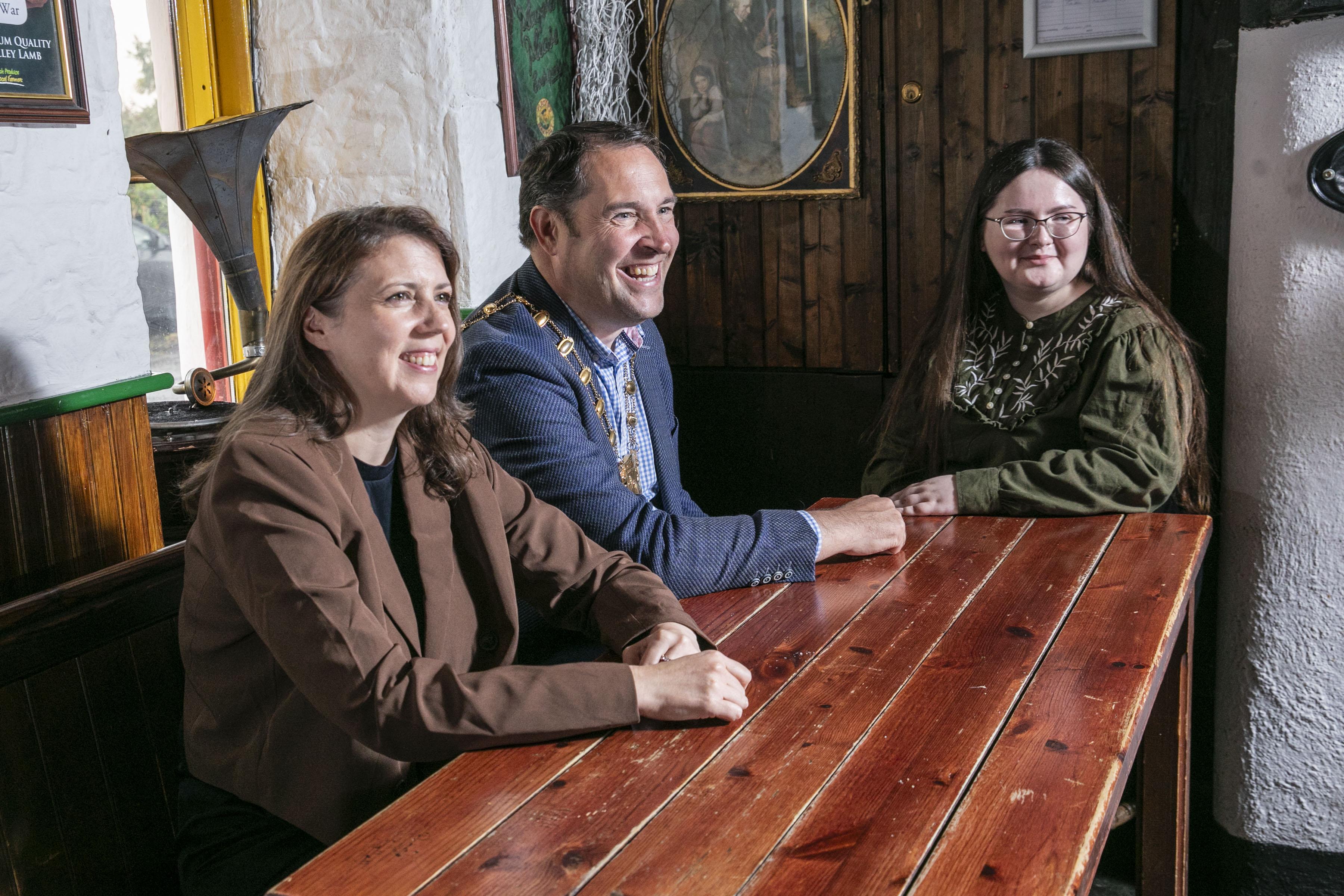
More information on ‘Turning of the Tithe’ by Sophie Daly
As a young person growing up in Ireland, Sophie was struck by the political landscape in her own decade, a decade which saw seismic changes in legislative freedoms which include the repeal the 8th Amendment, the 34th Amendment which allows same sex marriage and The Education (Admissions to Schools act) 2018, which states that religions cannot be a barrier to education in our multi faith society.
Working closely with the research gathered from Fingal’s commemorative timeline Sophie was interested in the somewhat muted records of women during this period, especially those of mothers who had lost sons either directly or indirectly as part of this conflict. Sophie weaves a narrative between the mothers and their soldier sons during this period of unrest where she compares this to the myth of Mechi a mostly forgotten tale in Irish Mythology. The Morrigan, the goddess of war bore this son who was doomed to be killed in infancy as his life would cause a greater disaster. The artist reflects on this idea that a mother often has to make a sacrifice be it with intention of a better future for the mother, the child and in the case of the mothers of freedom fighters the future of the country. The work takes the form of a three-channel animation and will be screened as part of Fingal’s commemorative exhibition which will take place in county hall in Swords.
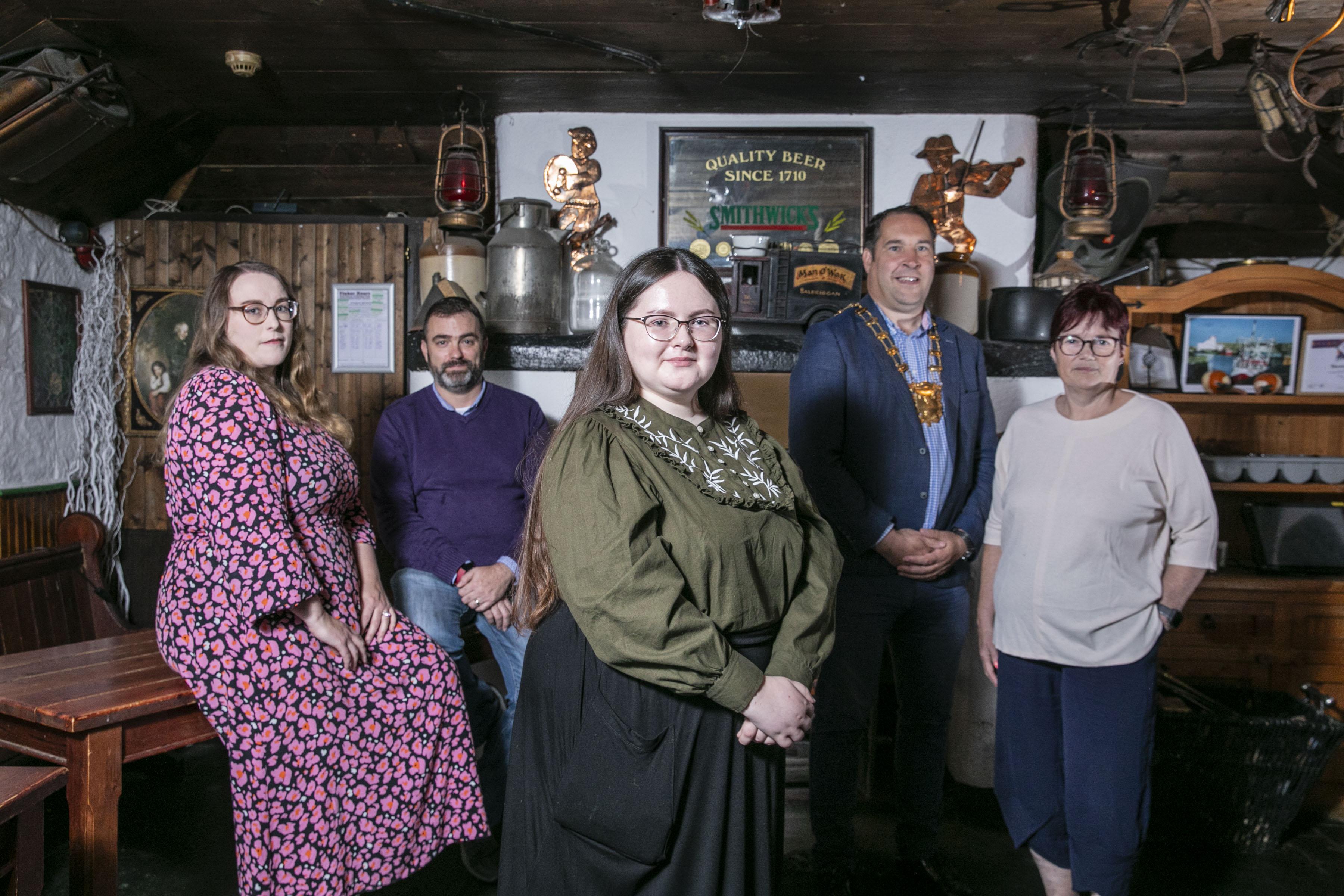
Fingal in the period 1912-1923
Fingal became a hive of political, military, and social activity during this period. Men and women from across the county were members of the Volunteers, the Irish Citizen Army and Cumann na mBan and played important roles in these organisations and contributed to events as they unfolded in Dublin City and in North County Dublin. Men from the Fingal Brigade, led by Captain Richard Coleman from Swords, fought in the Mendicity Institute on Ussher’s Quay after James Connolly asked Thomas Ashe for support. The building was surrounded and infiltrated by Wednesday 26th April 1916 and Peter Wilson from Swords was killed when the building was finally stormed. Others were involved with the battle at the GPO.
On Friday 28th April, the Fingal Brigade attacked the RIC barracks at Kilmoon, Ashbourne. The RIC defended it for a period of time but the men inside surrendered when the Volunteers threw bombs at the building. As the surrender was taking place a large force of RIC arrived from Slane to reinforce their colleagues and fighting began again. The Battle of Ashbourne was the biggest engagement outside Dublin city during Easter Week and the only battle won by the Volunteers in the Rising.
Running like a thread through this period is the fact that while battles were being fought in the fields of the county, Irish troops were also engaged in combat across the globe. World War One continued to rage and impacted everyday life in Fingal. Within the records of the Balbriggan Town Commissioners we read that the town hall was regularly used for funding raising events to cover the costs of injured service personnel, and also proposals to set up allotments to grow food to combat the steep increase in prices caused by the conflict.
What has also become clear is that the events of the revolutionary period impacted very heavily on the inhabitants of Fingal. Fingal was witness to some important incidents. The raid on Collinstown Aerodrome in March 1919, which resulted in the capture of over seventy rifles and five thousand rounds of ammunition, provided the Dublin IRA with arms for the bulk of the war against British rule. The sacking of Balbriggan on 20 September 1920 created worldwide headlines. The town was visited by the American Committee for Relief in Ireland, ensuring that British rule in Ireland came under international scrutiny.
Three brutal murders between October and December 1920 particularly shocked the county. On 27 October, John ‘Terry’ Sherlock was killed in Skerries; Ashbourne veteran Jack ‘Rover’ McCann was dragged from his home in Rush on 22 November 1920 and shot to death, and a month later, Thomas Hand was murdered in Skerries.
The arrival of the Truce in July 1921 was more than likely a relief to local inhabitants. The county was largely untouched by the Civil War, but Fingallians continued to be killed and injured in uniform across the country even after the conflict ended in April 1923.
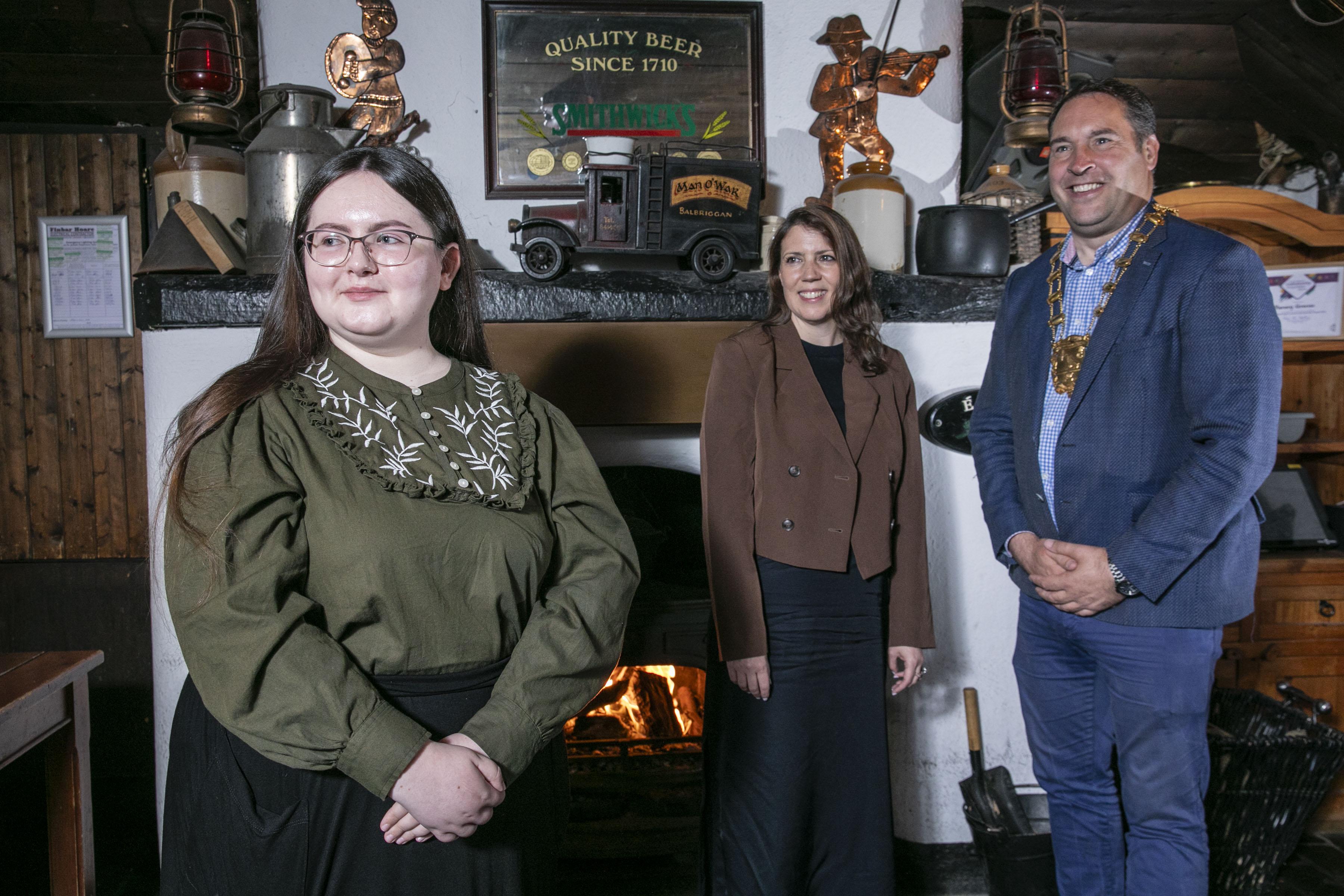
Details of Decade of Centenaries Public Art commissions.
In 2016 Rhona Byrne & Yvonne McGuinness presented Mobile Monuments a work which considered Fingal’s part in the 1916 rising and especially the role of women and their revolutionary mode of transport, the bicycle. Moving sculptural works travelled across Fingal by bicycle carrying materials created by the community, which when stopped, became sites of performance where new versions of the proclamation were delivered by school children in Rush, Oldtown & Ongar. In 2020, Mural artists subset were commissioned to deliver a new work to mark the Sack of Balbriggan 1920 on the site close to where Seamus Lawless and Sean Gibbons were killed by the British Forces. The work is a contemporary reflection of the burning of the town but where the inclusion of the Balbriggan Lighthouse provides a symbol of hope for a town that continues to thrive from these ashes.
In 2021 we partnered with The Irish Writers Centre to commission six pieces of new writing, including monologues, short stories, poetry and prose. These pieces included work by Irish Writers Centre Ambassadors Éilís Ní Dhuibhne and Ciara Ni É, as well as Dermot Bolger, Enda Coyle- Greene, Kit de Waal & Stephen Walsh, reimagined personal interpretations of the events that took place on the night of June 18, 1921, when the IRA burned the 6 Coastguard Stations of North County Dublin to the ground. The series titled A Burning Tide was brought to life by Arcade Film which was shot on location at Loughshinny Harbour and its surrounding landscape and featured stellar performances by Ian Lloyd Anderson, Joe Duffy, Kate Gilmore, Pat Kinevane, Niamh McCann, Marion O’Dwyer and includes contributions by writers Éilís Ní Dhuibhne, Ciara Ni É and Enda Coyle-Greene. In 2022,we remembered Frank Lawless. A photograph taken at his graveside in Rolestown became the inspiration for a film and music commission titled Peace to the Ashes by broadcaster Donal Dineen and featuring contemporary Sean Nos singer Inni K.